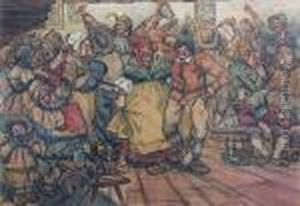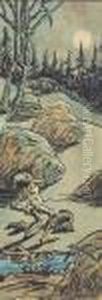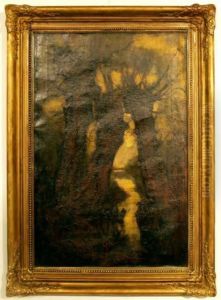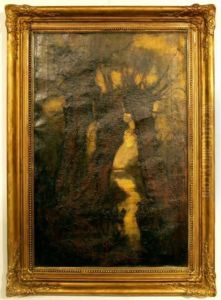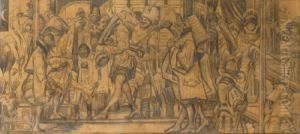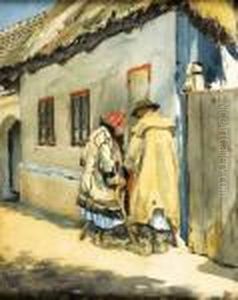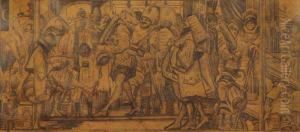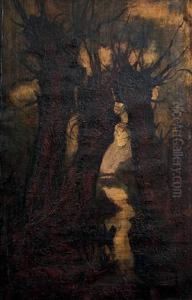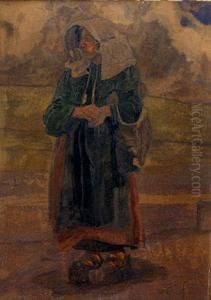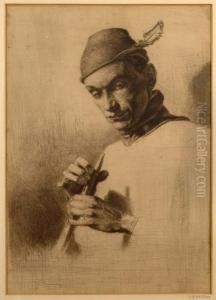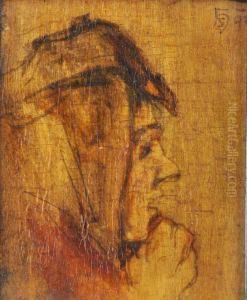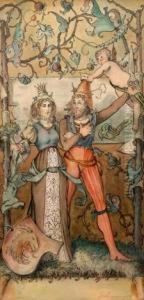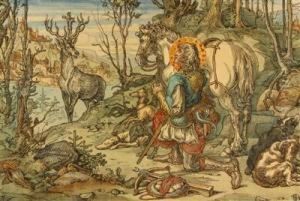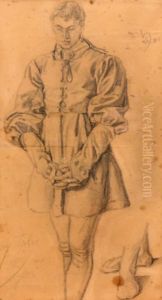Hans Schwaiger Paintings
Hans Schwaiger was an Austrian painter and graphic artist known for his significant contributions to art during the late 19th and early 20th centuries. Born on July 11, 1854, in Vienna, Austria, Schwaiger developed a keen interest in art at a young age. He pursued his passion by studying at the Academy of Fine Arts Vienna, where he was influenced by the academic painting style prevalent during that era. Schwaiger's early works predominantly featured religious themes, landscapes, and genre scenes, showcasing his adeptness in handling different subjects with equal finesse.
Throughout his career, Schwaiger's style evolved, reflecting the changes in artistic movements and his personal growth as an artist. He was particularly noted for his ability to blend traditional techniques with emerging styles, which allowed his work to remain relevant and appreciated by both his contemporaries and critics. Schwaiger's paintings are characterized by their detailed realism, subtle use of color, and the emotional depth they convey. His landscapes and portraits, in particular, are highly regarded for their serene beauty and meticulous composition.
Beyond painting, Hans Schwaiger made significant contributions to graphic arts. He was an adept etcher and woodcut artist, a skill that garnered him recognition and accolades during his lifetime. Schwaiger's graphic works often explored themes similar to those in his paintings but allowed him to experiment with line, texture, and contrast in ways that painting did not.
Despite his success, Schwaiger remained a relatively private individual, dedicated to his craft. He was a respected figure in the Viennese art scene, participating in various exhibitions and contributing to the artistic community. His works were showcased in numerous galleries across Europe, helping to cement his reputation as a significant artist of his time.
Hans Schwaiger's legacy lives on through his contributions to both painting and graphic arts. His ability to capture the essence of his subjects with sensitivity and depth has ensured that his works continue to be admired and studied by art enthusiasts and scholars alike. Schwaiger passed away on October 10, 1912, in Vienna, but his influence on the art world remains undiminished, celebrating the rich artistic heritage of Austria and the broader European art movement of his time.
